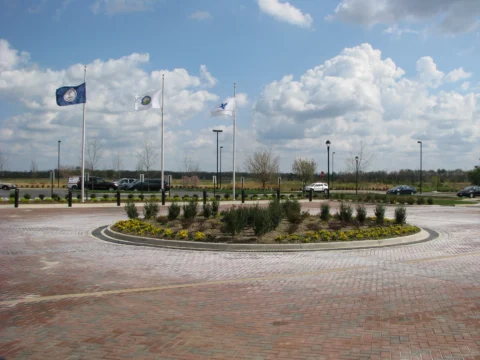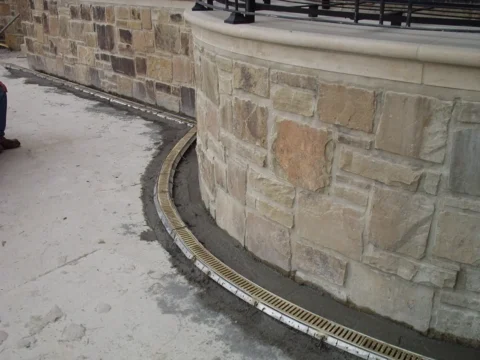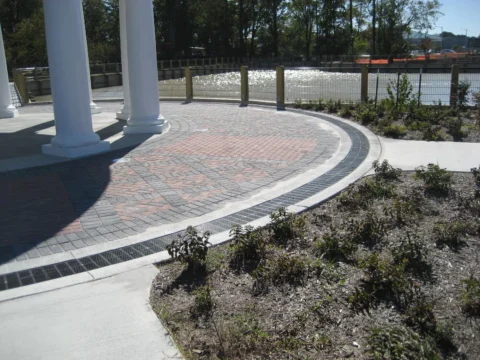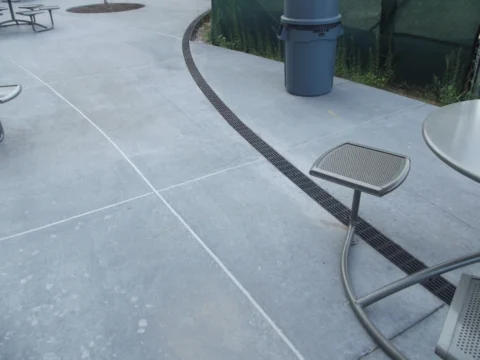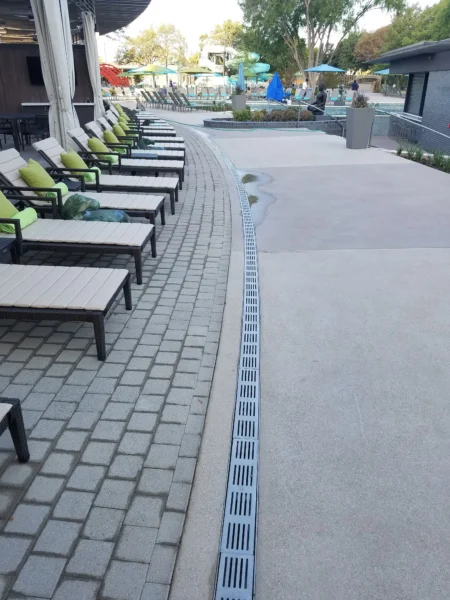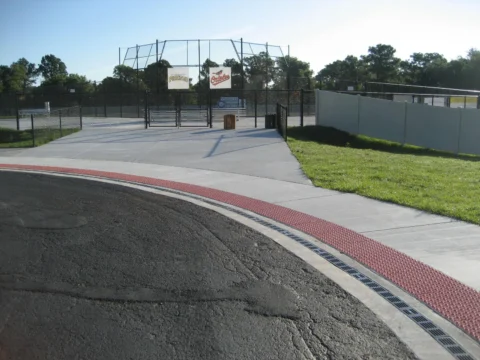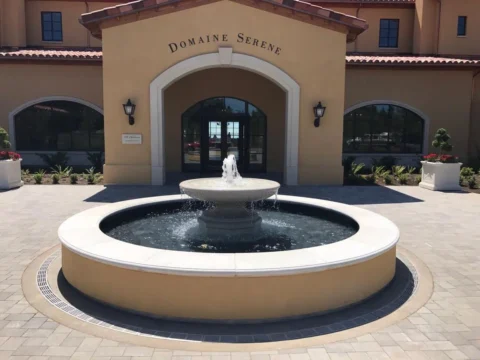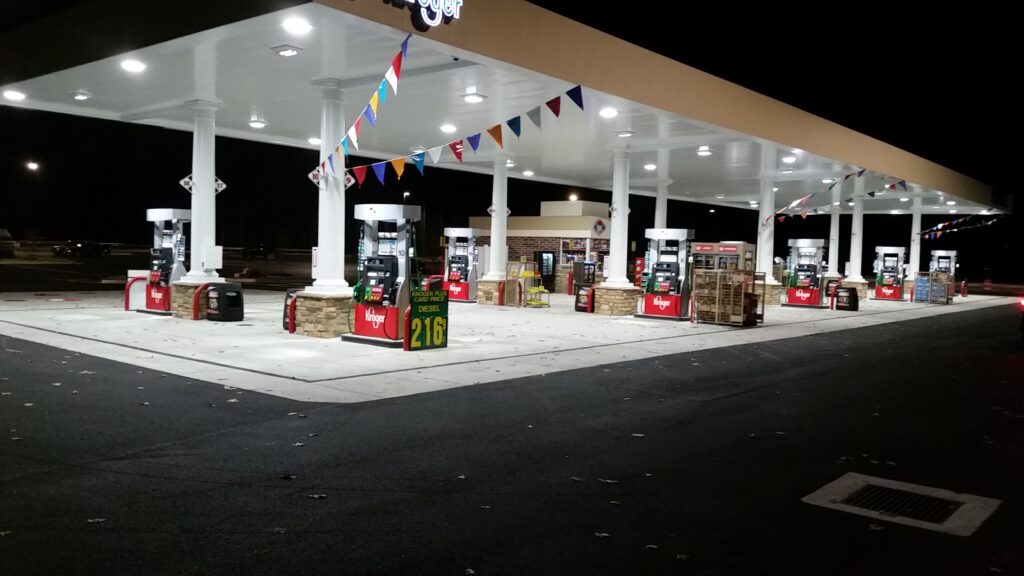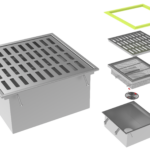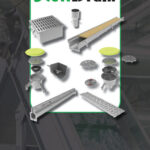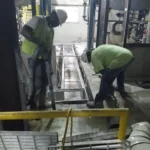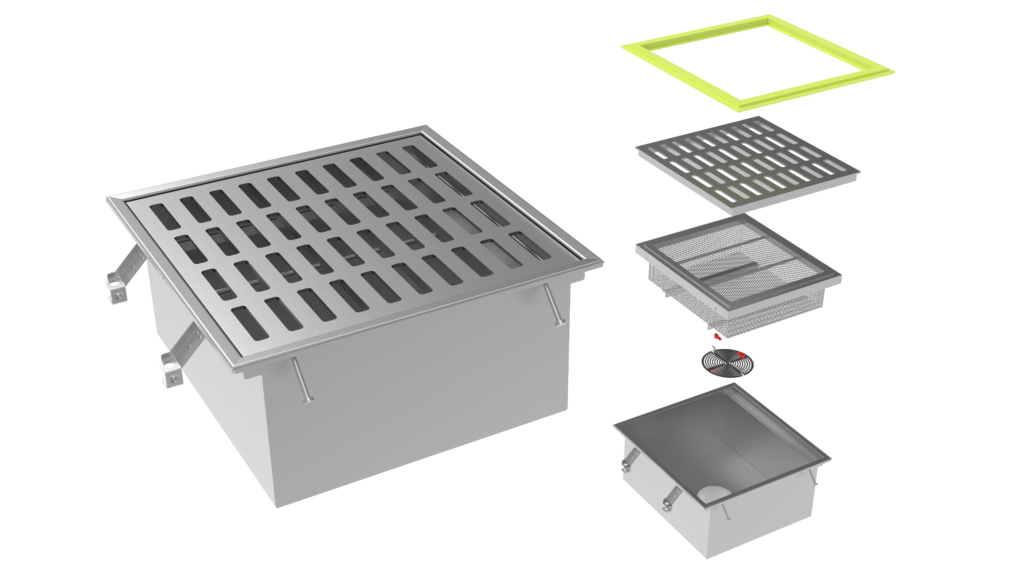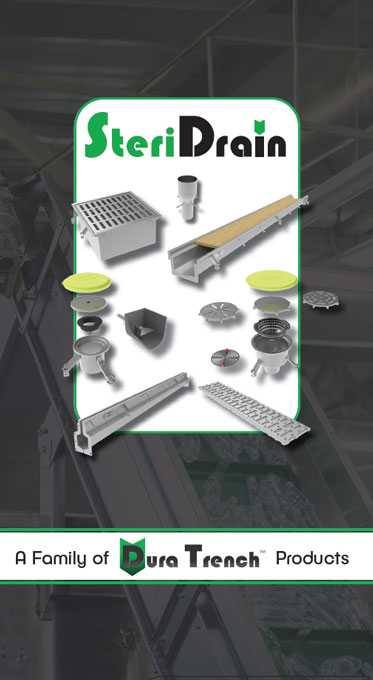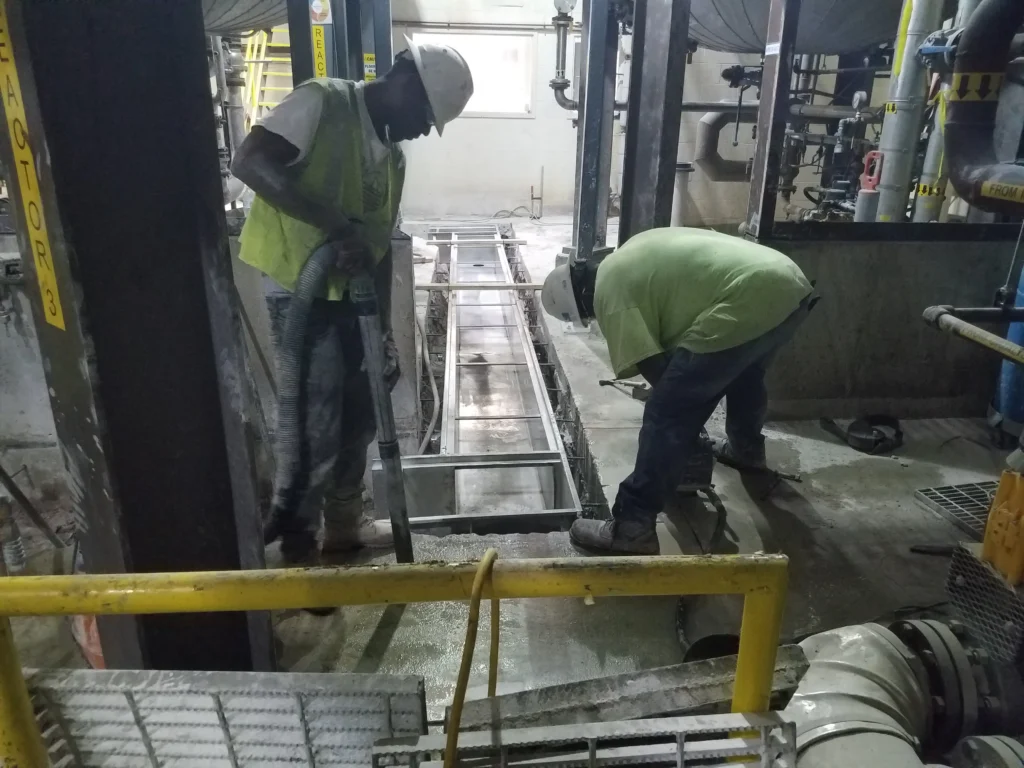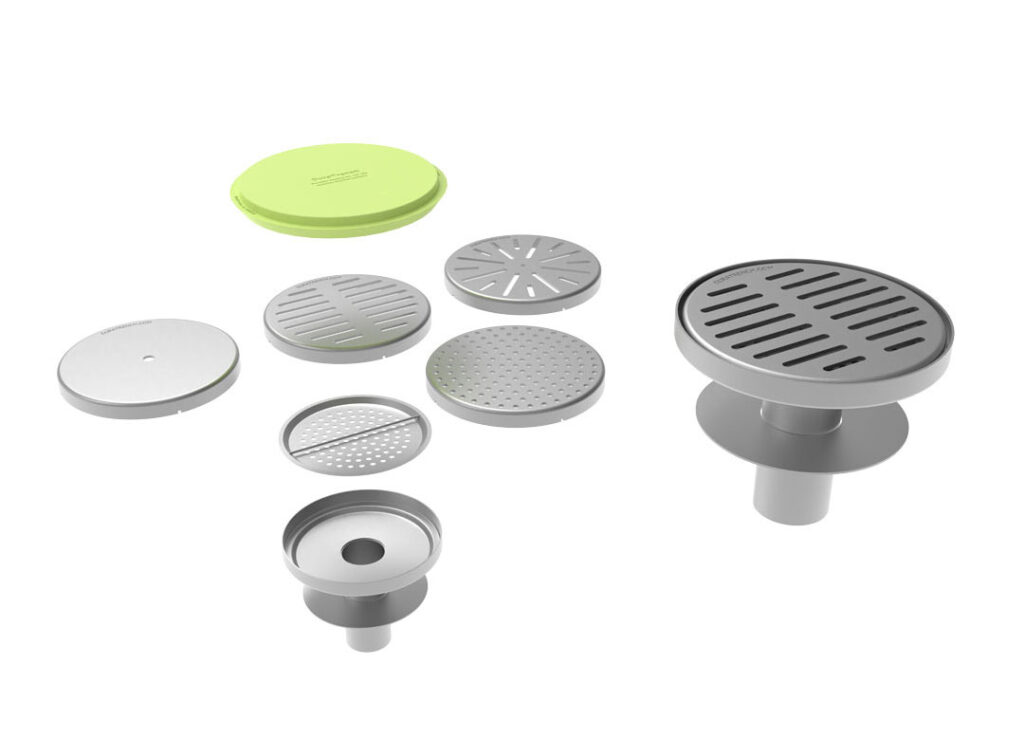If you have a drainage issue that needs to be addressed, a trench drain is almost always the right solution for this need. Trench drains are affordable to install, effective, and hold up for years of use. Trench drains are also really easy to install in buildings with already-completed floors, which makes them a primary choice for retrofitting drainage to existing buildings. Finding the right trench drain installation tips for existing concrete can be important.
Trench drains are relatively simple to install in existing concrete. This is why they are so often the drainage solution of choice for this need. This is quite common in industrial or business settings. However, yards, driveways, and other spaces at your home might also benefit from the addition of a trench drain where there is existing concrete.
If you need to resolve a drainage issue that will impact existing concrete, you will want to keep reading for more information.
Trench Drain Installation Tips for Existing Concrete
When you need to install a trench drain on your property, but you are worried about the fact there is concrete already present, you need to be prepared. Some of the things to consider below, including trench drain installation tips for existing concrete, are below.
Can You Add a Trench Drain to Existing Concrete?
Yes, you can add a trench drain to existing concrete. In the case of straight drains that need to have a fairly even and minimal slope, you should have no trouble adding trench drains to an existing concrete floor. This is a common requirement for drainage installations in factory or brewery settings, so many trench drain companies are quite familiar with this process.
Trench drains are really simple to retrofit because they do not require much prep before the drain can be installed. In addition, the shape and design of trench drains are also really ideal for working around existing flooring. You will not need to undermine a large area of your existing flooring for a trench drain installation to be stable and secure, and effective.
How do you Cut a Trench in Concrete?
The size of the project will determine which tools are needed for this kind of task. You will always need to have a circular saw with a diamond blade at minimum for this kind of job. Walk-behind wet saws are a better option for extensive projects as these can cover ground much more rapidly and are usually much more ergonomic to use. A wet saw will also produce far less dust when it is being used.
Cut carefully, and make sure that you check on your guidelines as you proceed through the process of cutting up the concrete flooring. You will have a hard time laying a small amount of concrete to repair very minimal issues with your cutting guide, so be sure that you avoid this problem by verifying that you are cutting where you should be at all times.
You will probably need a sledgehammer to break up the concrete once it has been cut so that it can be removed. Always be sure that you get all of the unwanted concrete out of the trench so that it can be leveled properly and prepared for the trench drain installation. Even small amounts of the concrete debris in the bottom of the trench can have an impact on the trench installation process.
Make Sure to Wear the Right Safety Gear
Concrete can create a lot of dust when it is cut, and it can also flake apart and throw pieces of the concrete slab into the air when it is broken apart with a sledgehammer. Be sure that you have protected your eyes and that you are wearing a high-quality mask to keep from breathing in the dust. Ear protection is another required safety item since cutting up concrete can be quite loud.
Wearing proper boots and proper clothing for this kind of work is also recommended. Concrete dust can be very abrasive, and you do not want to get it into the backs of your shoes or inside your pants or shirt. Gloves can also be a good idea.
Being sure that you will not get injured as you break up the concrete that needs to be removed is key. You do not want to have to take time away from your work because you have gotten hurt, and you will ensure that you can work far more comfortably if you take the time to get the right gear assembled before you start cutting.
Close Off the Area
Due to the noise and mess of installing a trench in concrete that has already been poured, you will want to consider screening off the work space from other parts of your property or your business. This will protect others from the dust and some of the noise related to the installation. Companies might have to consider shutting down for a day or a few days to allow the cutting process to be completed before workers can come back to their jobs.
Once the concrete cutting process is done, the installation of the trench drain is really simple, but the cutting process will take the most time and be the most disruptive. It is always a good idea to make sure that you have taken precautions to protect the people around the worksite from inhaling dust and chemicals related to breaking up the concrete. This work will also make it easier to clean up after you are done with the installation process.
Prepare the Trench
Make sure that you take the time to prepare the trench itself correctly for the trench drain that you are installing. You will need to pack down the ground, and you might need to add gravel and other material to make sure that the interior of the trench is level and smooth and will offer the right support to the trench drain itself.
Preparing the trench is not much different when you have dug into an existing floor than it would be if you were laying a trench in a location that did not yet have a building built around it. You will need to backfill, level, and compress the surface inside the drainage ditch to make sure that the trench drain system you have purchased will fit into it neatly. Make sure that the slope of the trench is correct as well before you start installing the trench drain system.
Make sure that you take the time to work on this step correctly, or your trench drain might fail down the road. Preparation and finish work are key to getting a full lifetime of use from the trench drains that you have installed.
Make Sure Your Trench is Placed in the Right Location
If you have been struggling with standing water inside a loading bay, on a walkway, or on your driveway, you probably already know where the water tends to collect. However, this might not be the most ideal place for your drain to be located. You might need to work with a skilled drainage installer to be sure that you are placing your trench drain in the right spot for maximum performance. Sometimes the lowest spot in your floor is not actually the most ideal spot for a trench drain. You might need to locate your trench close to this spot but not right on top of it.
The process of installing a trench drain can be complicated as well if you are not sure about what size drain to pick for your needs. This is another area where having the help of a skilled installer can be a big benefit to your trench drain installation process in an existing floor. Getting the right drain size picked out and also being sure that it is located in the right spot can make all the difference in the performance of your drain over the long haul. These two factors can also impact the lifespan of our drain, which is why cutting corners here doesn’t make any sense.
Installing a Trench Drain in an Existing Concrete Floor Can be Easy
There are so many reasons that trench drains are the preferred drainage solution for most applications having to do with concrete flooring or paths. The only hard part of the installation process is cutting the concrete, and once you have done this, you should have no trouble installing an effective and affordable trench drain system in your existing concrete flooring. Trench drains can be highly effective in many different kinds of locations, from breweries and factories to poolside spaces and parking lots.
Make sure that you get help with your drainage installation process if you are not sure what steps need to be taken to place your drain or what size drain will be best for your location. There are many parts of this process that will be easier if you have the right help and guidance, and being spared the risk of cutting into a concrete floor twice due to errors in your original plans can be a big benefit to working with a skilled installer.
A quality trench drain system will fit together neatly and be easy to install in an existing floor. Make sure that you pick the right kind of drain material and that you consider working with a skilled installation team for your added drainage job. Take a look at these trench drain installation tips for existing concrete for all of your trench drain needs.

